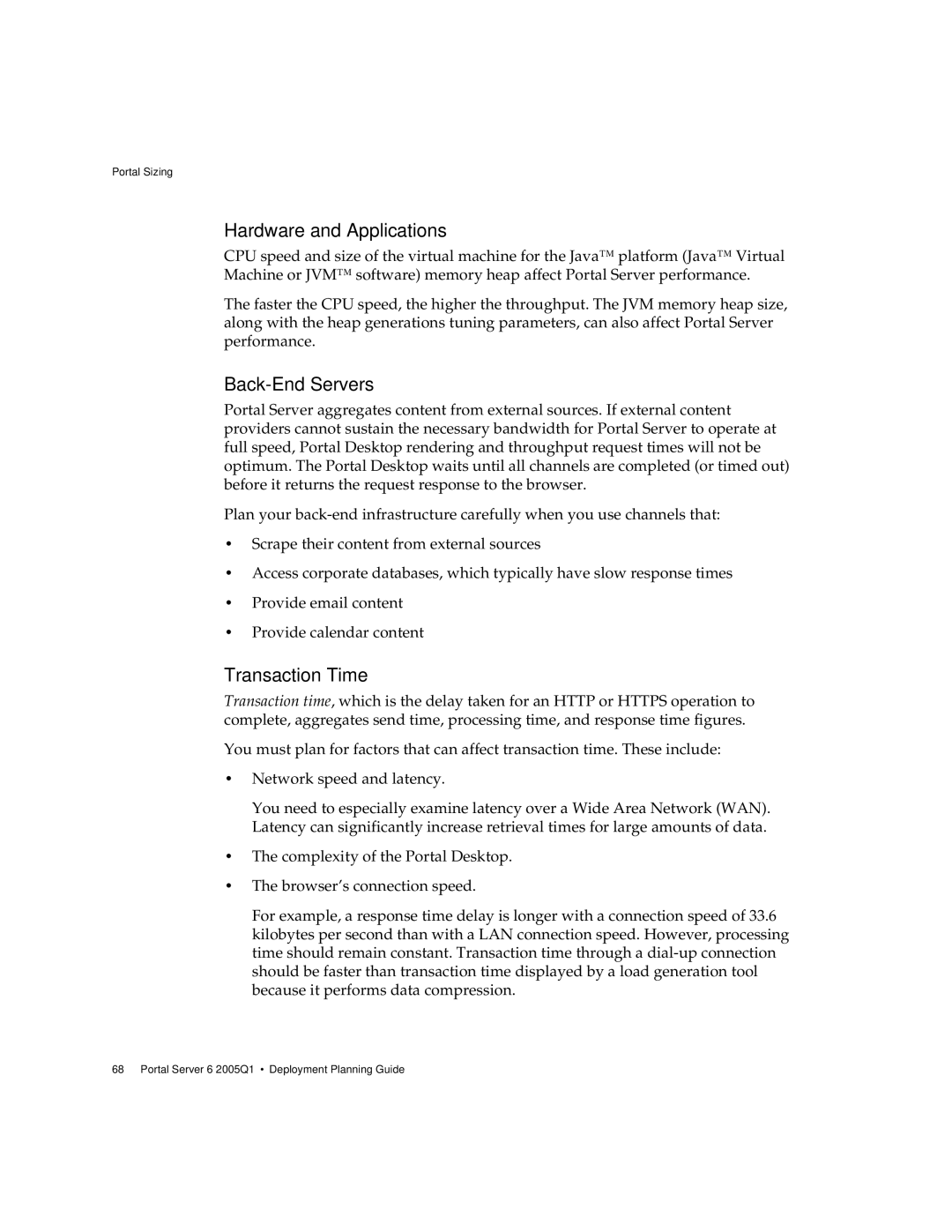Portal Sizing
Hardware and Applications
CPU speed and size of the virtual machine for the Java™ platform (Java™ Virtual Machine or JVM™ software) memory heap affect Portal Server performance.
The faster the CPU speed, the higher the throughput. The JVM memory heap size, along with the heap generations tuning parameters, can also affect Portal Server performance.
Back-End Servers
Portal Server aggregates content from external sources. If external content providers cannot sustain the necessary bandwidth for Portal Server to operate at full speed, Portal Desktop rendering and throughput request times will not be optimum. The Portal Desktop waits until all channels are completed (or timed out) before it returns the request response to the browser.
Plan your
•Scrape their content from external sources
•Access corporate databases, which typically have slow response times
•Provide email content
•Provide calendar content
Transaction Time
Transaction time, which is the delay taken for an HTTP or HTTPS operation to complete, aggregates send time, processing time, and response time figures.
You must plan for factors that can affect transaction time. These include:
•Network speed and latency.
You need to especially examine latency over a Wide Area Network (WAN). Latency can significantly increase retrieval times for large amounts of data.
•The complexity of the Portal Desktop.
•The browser’s connection speed.
For example, a response time delay is longer with a connection speed of 33.6 kilobytes per second than with a LAN connection speed. However, processing time should remain constant. Transaction time through a
